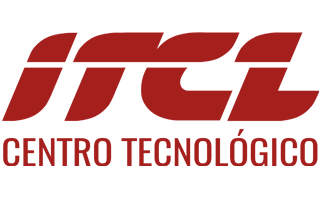
REDALSA – Rail Defect Detection Software for Enhanced Safety
REDALSA, Rail defect detection software enhances railway safety by analyzing surface defects and measuring wear on railway tracks. Utilizing Machine Learning and Artificial Intelligence, this innovative solution optimizes maintenance and prevents potential accidents.
Development of software for the detection and analysis of surface defects on the rail and measurement of their wear.
What is REDALSA?
The measurement of possible surface defects of the rail and the measurement of rail wear must be part of the set of inspection and auscultation processes of the track superstructure, constituting an instrument for the detection of surface defects of the rail where ultrasound does not reach due to the blind zone resulting from its coupling, which is basic for the programming of the rail maintenance interventions, as well as for the prevention of accidents and precursors of accidents in terms of railway safety in accordance with what is expressed in respect of common safety indicators in Royal Decrees 918/2010 of 16 July, 41/2011 of 9 May and 1006/2015 of 6 November, amending Royal Decree 810/2007 of 22 June, which approves the Regulation on safety in the circulation of the General Interest Railway Network.
REDALSA Problem to be solved: Optimizing rail defect detection and wear measurement
The gradual increase in train running speeds, which increases dynamic loads and, therefore, the damage to the platform and superstructure, as well as new maintenance philosophies based on carrying out work according to condition, to optimise the life cycle of the asset and the search for prognosis, which consists of identifying what is going to happen before it happens in order to improve the scheduling of maintenance resources, coupled with the ever-increasing use of infrastructures and an increase in passenger safety and comfort levels; This is leading to the development of approaches to implement new technologies to improve the identification of potential rail defects.
RESALSA Objectives:
The objective of this project is the development of software for the detection and analysis of surface defects in railway rails and the measurement of their wear and its deployment and integration into existing measurement and auscultation infrastructures and systems used by REDALSA.
The specific objectives to be achieved are as follows:
- Specification of data structures to be provided by the infrastructure, as well as the initial validation of the selected equipment.
- The reconstruction or mapping of the rail profile, identifying defects on the active face of the rail head.
- The development of Machine Learning algorithms for the detection and classification of defects and physical characterisation of the rail.
- Development of architectures, services and protocols for sending, storing and processing data.
As secondary objectives, and which form part of the project in terms of the technologies proposed, the following are established:
- The development of monitoring and defect alert services.
- The integration with other REDALSA systems and architectures, such as dynamic auscultation, in accordance with the required regulations and standards.
- The development of hardware and software architectures that guarantee the usability and security of all of the above.
Result of the project:
- Detection of surface defects in the head, web and skid in addition to those where ultrasound is not effective.
- Localisation, by means of a continuous process of application of the system (PK and GPS), of the existing surface defects on the rails, in real time, on board a rail vehicle prepared in conjunction with ultrasound.
- Systematic confirmation of the defects detected and their dimension.
- Prevention and justified assessment of their potential risk for traffic safety, as well as recommendations of measures to be taken.
- Access by REDALSA to the results of this inspection, including geospatial representations.
- Unification of different types of auscultation and inspection to optimise costs and human and material resources on the track.
- Elimination of the need for coupling means, thus ensuring the quality of the inspection.
- This type of system provides high precision and allows high sampling frequencies.
Furthermore, based on the benefits presented in this project, new alternatives to the use of these auscultation and inspection technologies, not contemplated in this offer, could be generated, as presented below:
- Continuous measurement of wear and cracks in wheels.
- Maintenance of variable width axles.
- Detection and cataloguing of new faults.
- Future maintenance planning (predictive maintenance).
REDALSA duration:
2020 – 2021
REDALSA Project in cooperation with:
The project has been financed under a public tender contract from Redalsa.
Contact person:
Silvia González – Head of AI at ITCL Technology Centre


